Guest post by Katarina Stiller, summer 2023 Cathleen A. Baker Fellow in the U-M Library conservation lab. Katarina is a third year graduate fellow in the Winterthur/University of Delaware Program in Art Conservation currently interning with the University of Iowa Libraries Conservation Lab.
As this summer’s Cathleen Baker Fellow in the U-M Libary’s conservation lab, I had the opportunity to treat pop-up books from the Children’s Literature Collection in the Special Collections Research Center. This is a continuation of efforts from a previous fellow, the results of which can be found here.
For the two books in this post, my goals were to unify the overall imagery of the illustrations and restore function, enabling the full use of the books and their pop-up components.
The books, Schneewittchen (1961) and Rotkäppchen (1960) were illustrated by Vojtěch Kubašta, a Czech architect and artist who engineered and illustrated pop-up books in the 1950s and 60s. Kubašta’s elaborate pop-up books have enjoyed enormous popularity, with approximately 35 million copies sold in 24 different languages.
Both books have fully illustrated openings with numerous pop-up elements and moving arm mechanisms. Years of heavy use have naturally led to extensive wear. The books have missing and torn parts, creased and distorted pop-ups, and old tape repairs that have stained the illustrations.
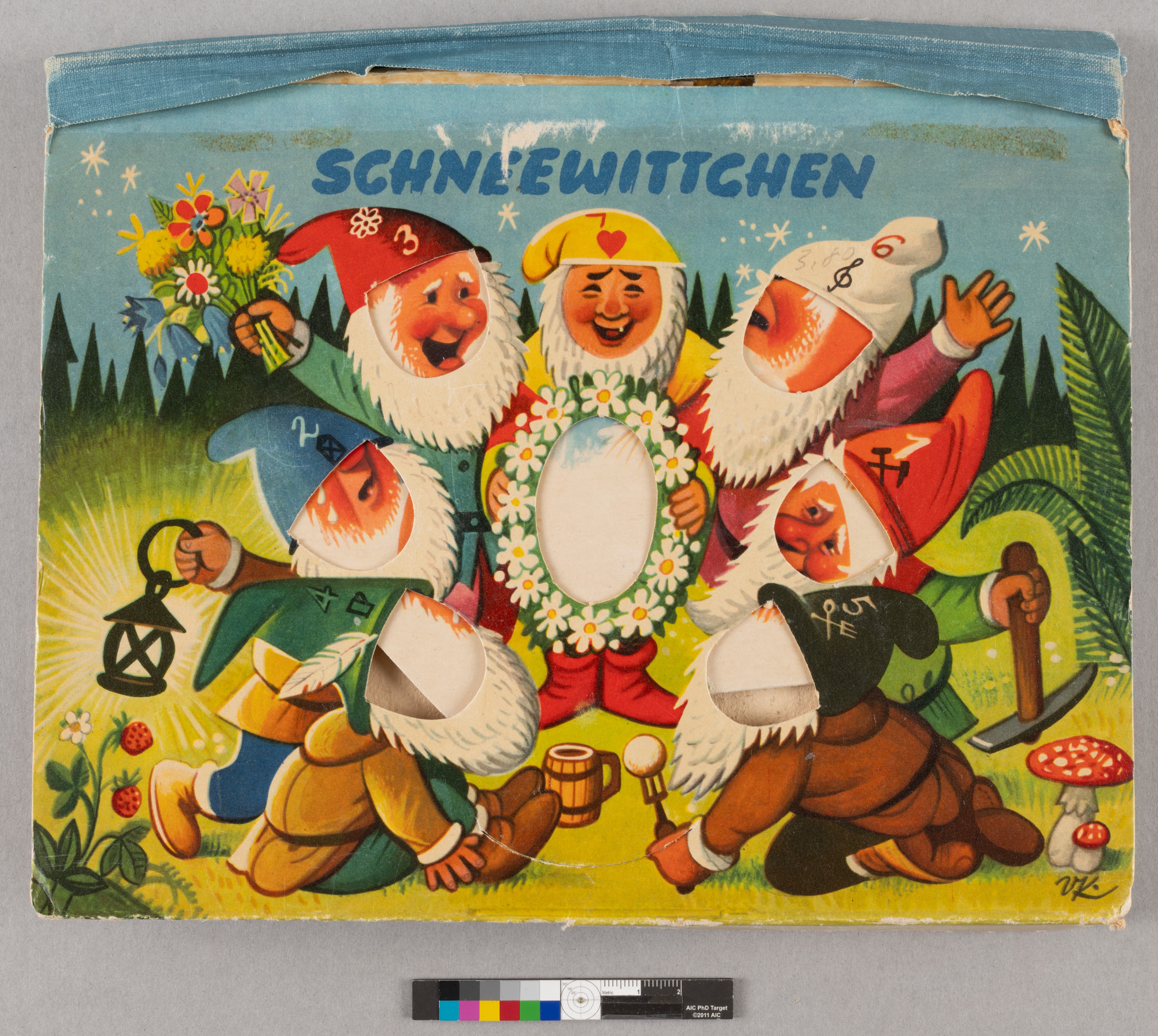
Before Treatment of Schneewittchen [1961], illustrated by Vojtěch Kubašta and published by Carlsen Verlag GMBH. William A. Gosling Pop-up and Movable Books Collection.
For this dual treatment project, I first removed the old tape repairs that had yellowed and become brittle with age. Then, I was able to realign and mend tears with wheat starch paste, a stable and reversible adhesive. I attached paper inserts that matched the overall look and feel of the original paper to areas of loss and damage. I inpainted these fills with watercolors to visually unify the new support material with the original illustrations.
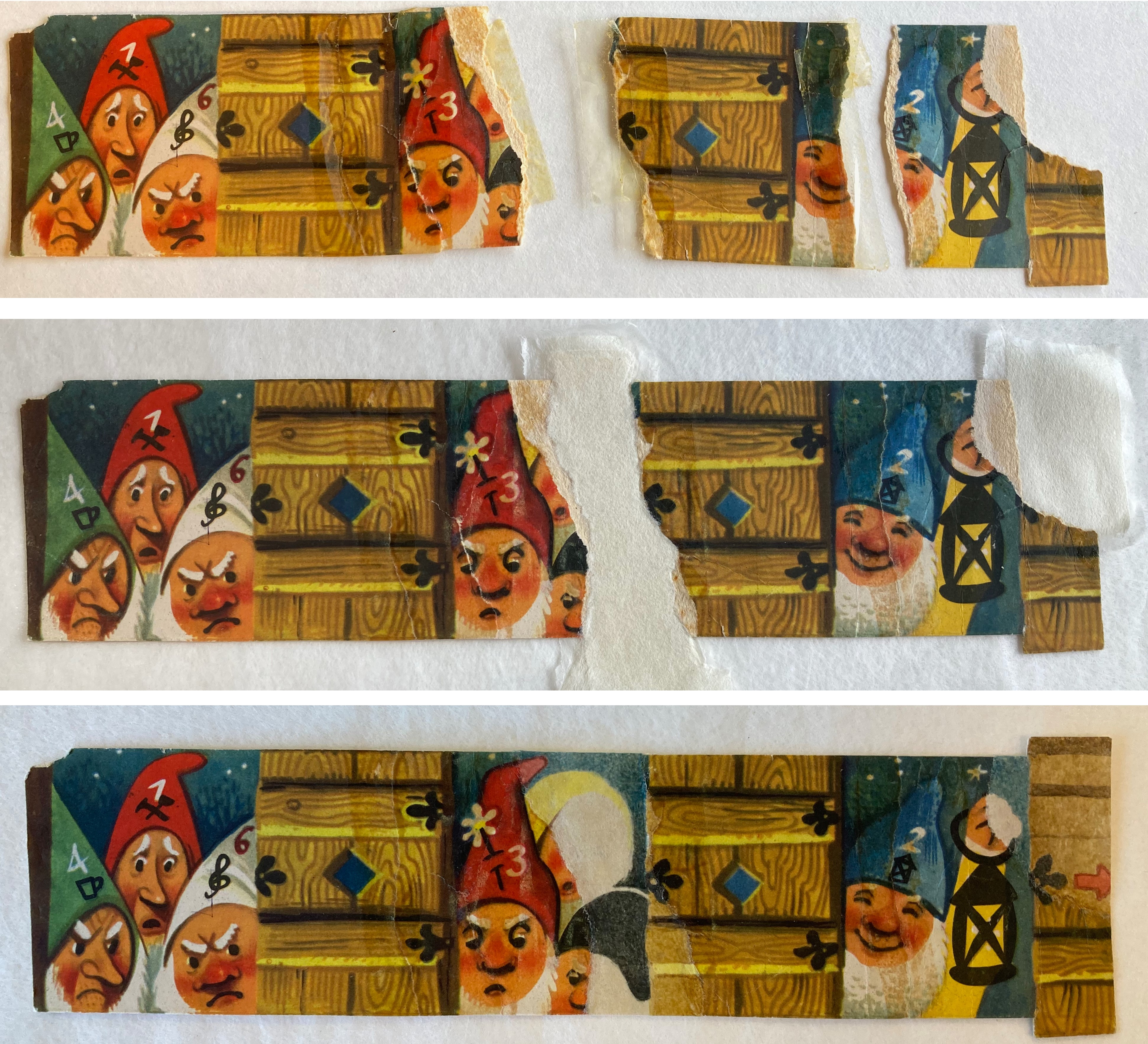
The progression of treatment, including tape removal, tear repair, fills, and inpainting.
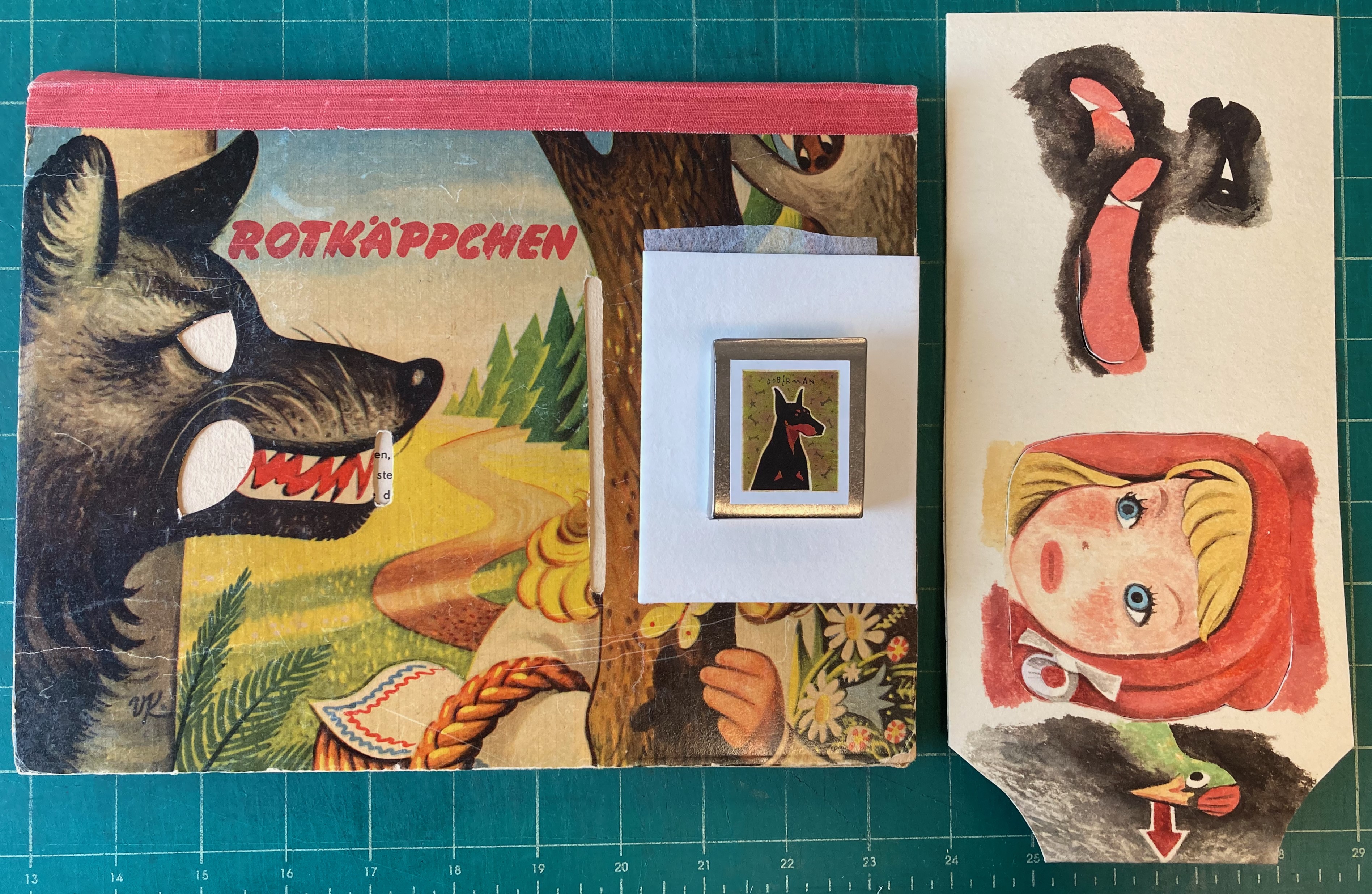
Before treatment --- Rotkäppchen [1960], illustrated by Vojtěch Kubašta and published by Carlsen Verlag GMBH. William A. Gosling Pop-up and Movable Books Collection. The cover of the Rotkäppchen book was missing an integral moving piece, so a replacement piece was created. I used the English-language version of the book to determine exactly what the image should look like, and recreated it using watercolor paints.
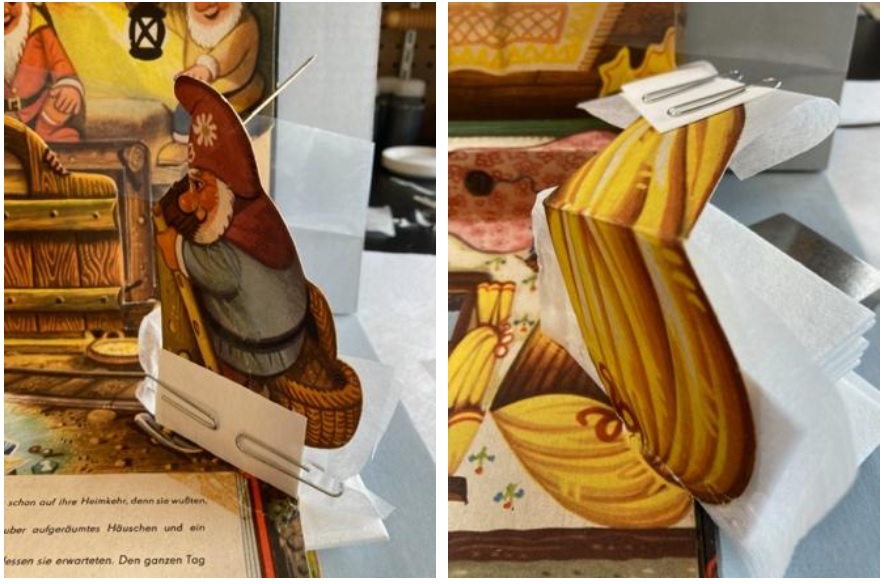
Pages that had crumpled and distorted pop-up elements were gently realigned with local humidification and flattening.
Now all the pop-up components and moving arm mechanisms can be safely handled, enabling the stories inside to get moving again! Head over to our Tumblr post to check out the books in motion.
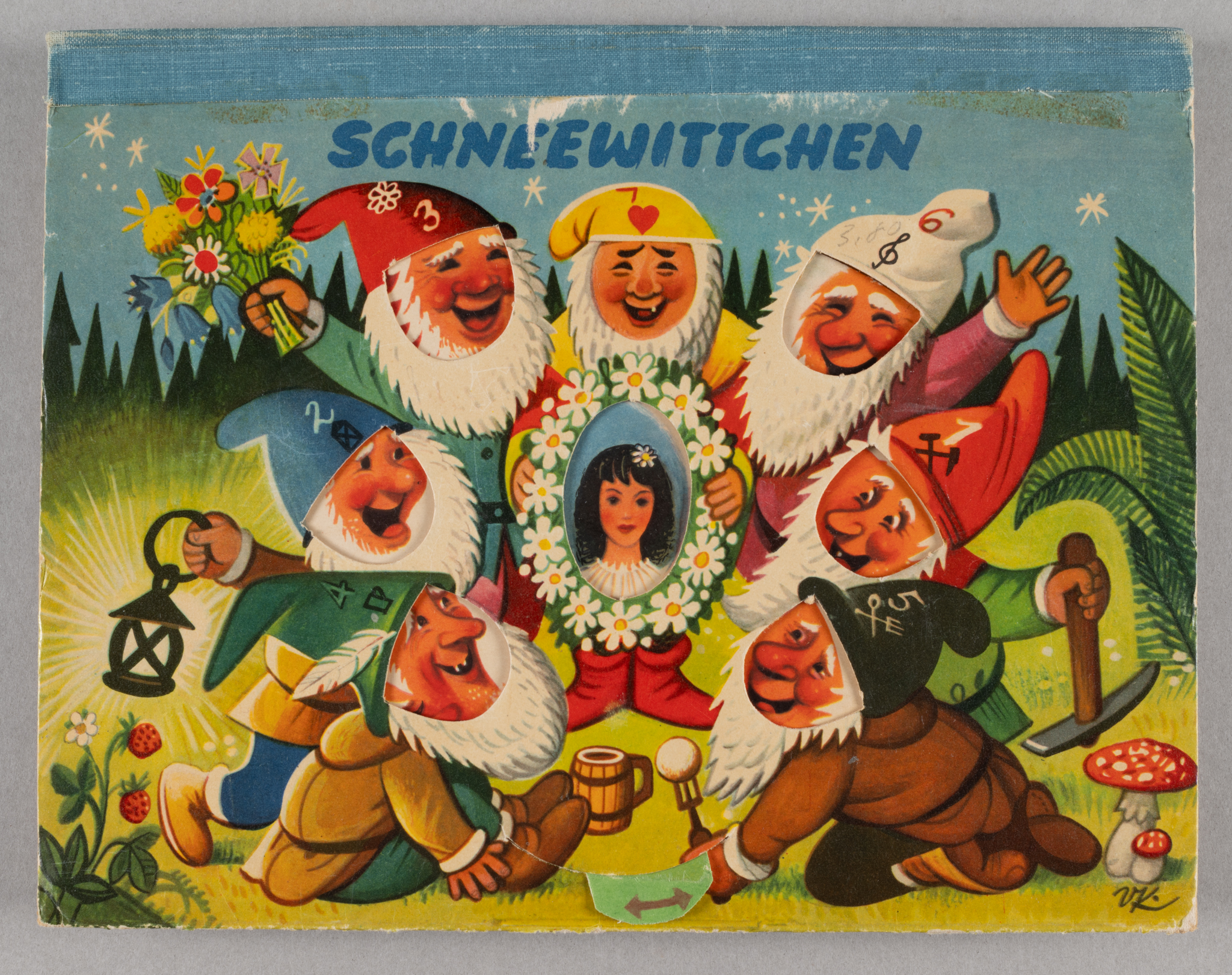
Cover of Schneewittchen (1961) after treatment!
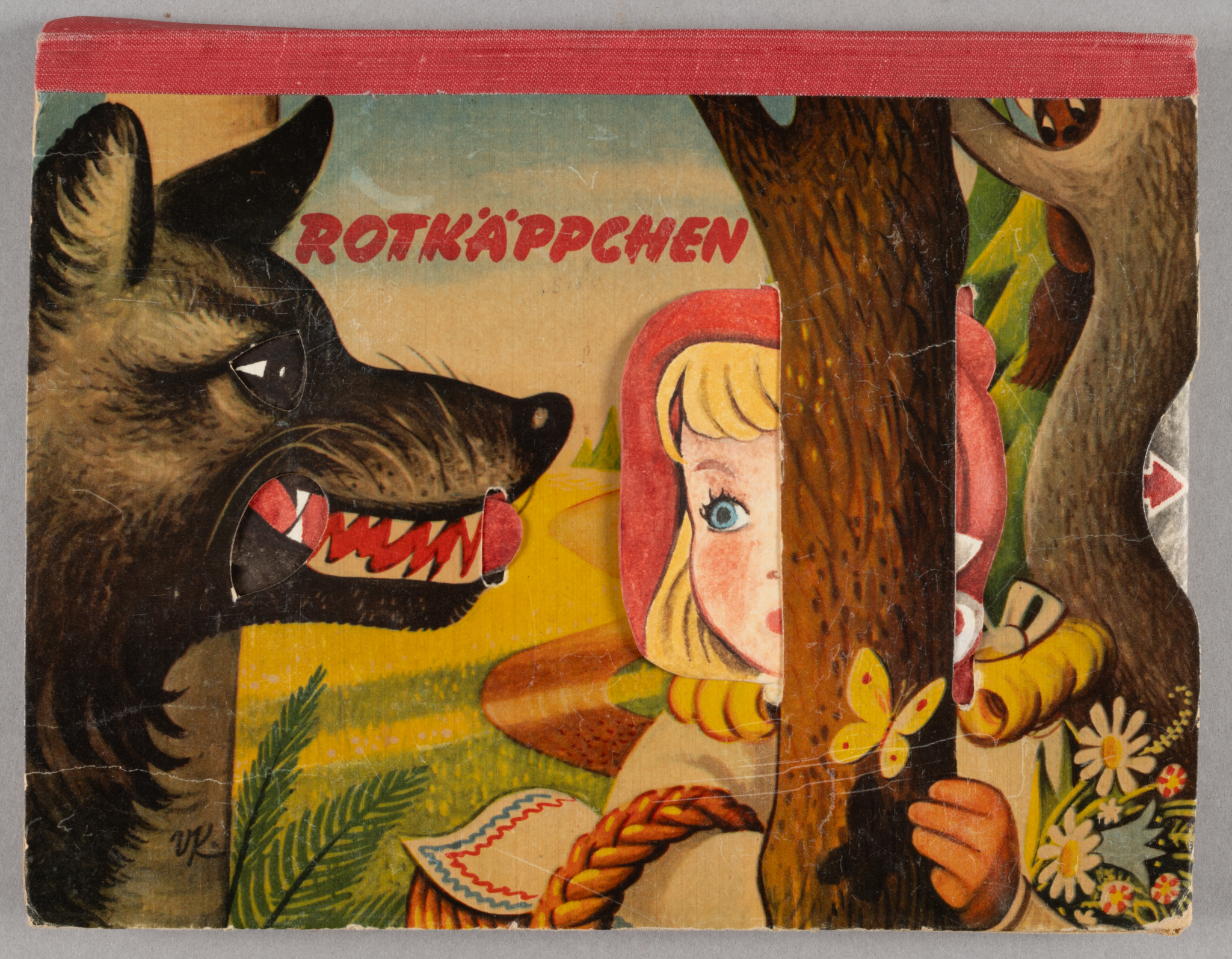
Cover of Rotkäppchen (1960) after treatment!
The William A. Gosling Pop-up and Movable Book Collection at University of Michigan Library is part of the Children's Literature Collection in the Special Collections Research Center. William A. Gosling (University Librarian, 1997-2005) began donating his personal collection of pop-up and movable books in the early 1990s. He continued to add to the collection over the next three decades, and served as curator of the Children's Literature Collection in Special Collections from 2005-2008. The collection now stands as an impressive resource for pop-up and movable books dating from the nineteenth century through present day.